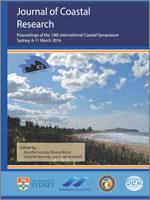Liang, Y.; Kench, P.S., Ford, M.R., and East, H.K., 2016. Reef sediment supply and island building in the South Maldives. In: Vila-Concejo, A.; Bruce, E.; Kennedy, D.M., and McCarroll, R.J. (eds.), Proceedings of the 14th International Coastal Symposium (Sydney, Australia). Journal of Coastal Research, Special Issue, No. 75, pp. 587–591. Coconut Creek (Florida), ISSN 0749-0208.
Reef islands are small, low-lying islands composed mainly of bioclastic sands and gravels from the late Holocene. These islands, which support around 700,000 people, are vulnerable to potential threats including land submergence and shoreline erosion. Thus, the sediment supply of the surrounding coral reef is an important consideration for coastal maintenance but there is little research on the link between reef productivity and island building. This paper presents an examination of reef and island beach sediments (material and composition), as well as the eco-geomorphic zones of the contemporary reef. Two islands in Huvadhu Atoll of the Republic of Maldives were used in this investigation. Surficial sediment samples were collected from each reef zone, toe of beach, and beach berm for each island. Benthic surveys for each reef platform and aerial photo analyses were used to determine reef ecology and to constrain the eco-geomorphic zones on the reef. Prevalent organisms on both reefs were coral, crustose coralline algae, and Halimeda sp., while other sediment producers (molluscs and foraminifera) were less represented or absent. However, sediment samples taken from the reef flat show that all constituents are present, similarly to sand samples from the island beaches. The reef and beach sediments had similar compositions, suggesting that the island is still connected to the surrounding reef. This research provides insights into how these reef islands are maintained by the surrounding reef, which has implications for future island building and resilience to climate change.





